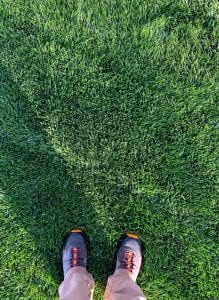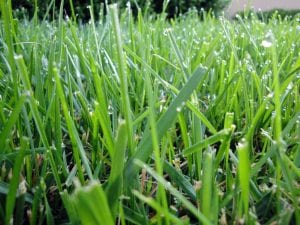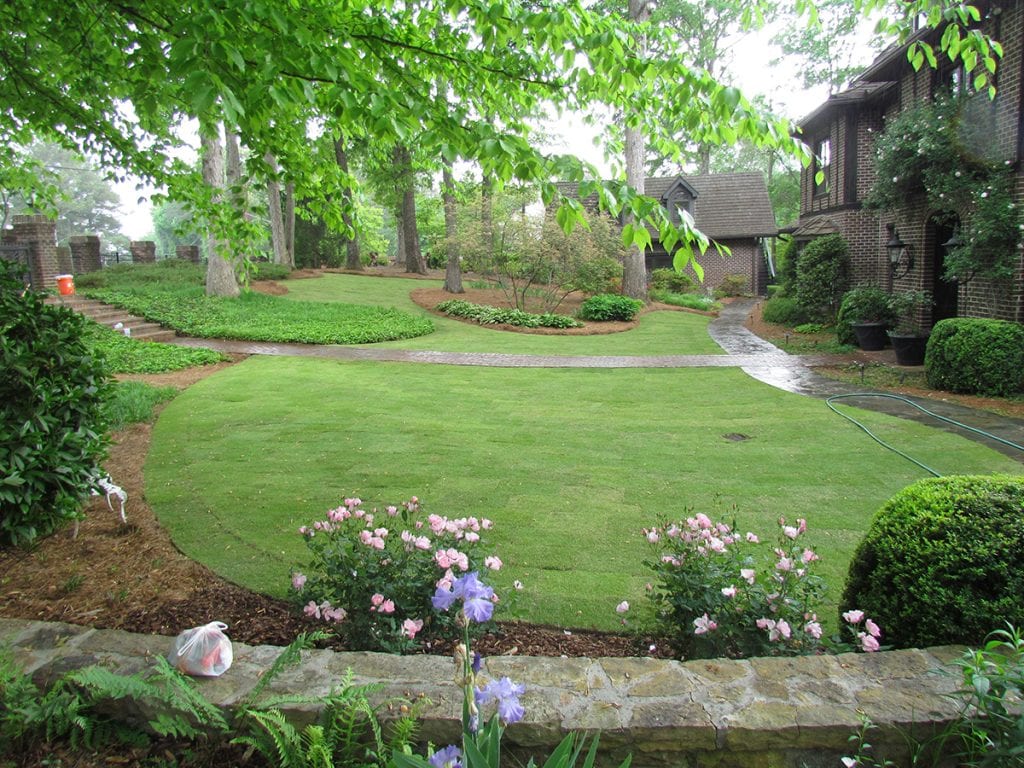Types of Grasses: Warm Season vs. Cool Season Grasses & the 4 Reasons It Matters
When our RYAN Pros make their first visit to a new customer’s home, one of the first questions we hear is “What type of grass do I have?” or, “What types of grass seed should I use?” At Ryan Lawn & Tree, our lawn care Pros manage and recommend different types of turf grasses depending on where you live, your soil type and how much sun your lawn gets. There are about a dozen different types of grasses and most lawns throughout the Midwest contain a mixture of them. To help you better understand what type of turfgrass you have now and whether warm-season or cool-season grasses may be best for your property, we’ve answered some of the most commonly asked questions about the different types of grasses used in our five RYAN locations.
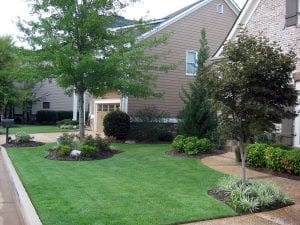
Ryan Lawn & Tree offers a variety of types of lawn seed options including this beautiful Bermuda Grass lawn.
Why Does My Type of Lawn Grass Matter?
Every spring, we are bombarded with advertisements encouraging us to get outside and make our lawn the lushest, greenest lawn on the block. The truth is, the type of lawn grass you have can make a big difference in making that green lawn dream a reality. The truth also is, these commercials are often prepared for a national audience and what works in eastern Pennsylvania is probably not what’s going to work in our Midwest locations.
All turfgrasses are not alike. Turfgrasses are commonly organized into two major groups: cool-season grasses like tall fescue and Kentucky bluegrass that thrive in cooler temperatures. And warm-season grasses like Bermuda grass and zoysia grass that grow best in warm climates. In the Midwest, we fall into what is considered the Transition Zone, which makes it possible to grow both types of turf, but each with its own set of challenges. Identifying the types of lawn grass you have is important for several reasons.
1. Fertilizer.
Different types of grasses require different fertilizer requirements and application schedules. Not all fertilizers are created equal. Depending on the composition of the fertilizer you may see the turfgrass respond in different ways. Fertilizing with the wrong product or at the incorrect time can potentially damage your lawn. It can weaken the hardiness of the grass plant, putting it at risk of injury from pests, diseases or worse.
2. Disease.
Different types of grasses are more or less susceptible to different types of diseases. The diseases that attack cool-season lawns are worse during the late spring and summer months. Whereas the diseases that attack warm-season grasses appear in the lawn during the cool months of the fall and spring. Most of these diseases are exacerbated when the lawn has extreme moisture from rain or irrigation. Identifying the type of grass you have can help you determine exactly what disease or fungus is making a brown spot in your yard.
3. Growth.
Your lawn’s growth cycle will vary, depending on the type of lawn grass you have. Timing your lawn treatments is important based on the growth cycle of your lawn in addition to climate and moisture. For example, the prime growing season for cool-season grasses are spring and fall. This is when fertilizations are most critical and the majority of growth will occur. Warm-season, on the other hand, does all of it’s growing during warm weather, typically from late spring through late summer which is when fertilization should occur.
4. Climate.
Lawn grass seeds are selected to perform their best in a variety of different climates and sun exposure. In our Kansas City, St. Louis and Wichita locations, lawns are subjected to wide temperature swings and you’ll need a grass type that can survive sub-freezing temperatures as well as sweltering summers. Springfield and Tulsa locations experience a little more moderate climate change but often receive more moisture.
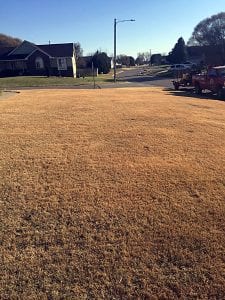
Warm-season grasses like Buffalo grass type turn brown in the winter.
What Type of Grass Do I Have?
Knowing whether your lawn is a warm-season grass or cool-season grass may be as simple as asking yourself if your lawn turned completely tan or brown last winter? If your lawn turns brown, you have a warm-season grass like Bermuda grass or zoysia grass. If your lawn remains somewhat green, you have a cool-season grass like fescue, bluegrass, ryegrass or most commonly, a mixture.
-
Cool-Season Grasses
Cool-season grasses have adapted to successfully grow in areas like the Midwest where we have extreme temperature fluctuations without warning. You’ll find your cool-season lawn grows best when the temperature is between 60º and 75º. When winter comes and your lawn freezes, your cool-season grass will go dormant and turn a greenish-yellow until spring emerges. Oftentimes, lawns will include a mix of cool-season grasses for optimum thickness and longevity.
-
Warm-Season Grasses
Warm-season grasses can still thrive and survive in the Midwest, but can sometimes be negatively affected by an extremely harsh winter. Warm-season grasses grow best when temperatures are above 75º and, therefore, are most common in Southern climate zones such as our Tulsa location. In the Midwest, warm-season grasses are often established by sod in areas where a lower level of maintenance is desired. However, with proper maintenance and care, a warm-season grass can make for an amazing lawn. When winter rolls around, you’ll see your warm-season lawn turn a tawny brown — almost looking dead! But with warm weather and spring rains your resilient warm-weather grass will recover and green up beautifully.
What Are Cool-Season Types of Grasses?
Cool-season grasses are, by far, more prevalent in Ryan’s Midwest locations and include these popular varieties or a combination of grass types:
-
Kentucky Bluegrass
This lush, green grass type produces medium-sized leaf blades with a soft feel and is the most widely used cool-season grass in the country. When taken care of, Kentucky Bluegrass can produce a beautiful Midwestern lawn. It grows fast in warm and cold temperatures but is at risk in drought stress. That’s why RYAN often uses a blend of this grass type with fescue for full sun areas or perennial ryegrass for shady areas.
-
Tall Fescue
Tall fescue can withstand a good deal of foot traffic. It tends to have a thicker leaf blade, grows a brilliant emerald green and is most known for the way it adapts to our fluctuating Midwest temperatures. It pairs well with Kentucky bluegrass because it does thrive well even in shaded areas. Its roots grow deep, allowing it to survive with less watering than other types of grass.
-
Creeping Red Fescue
Creeping Red Fescue is a type of fine fescue that is often used as a blend with other grasses in what is called a “Shade Mix”. This medium to dark green grass will keep its color year-round and is perfect for shady, dry areas of your lawn. It grows slowly and does not recover quickly when damaged but otherwise, it’s one of the softest types of grass, looks great and is easy to maintain.
-
Perennial Ryegrass
Another great blending cool-season grass for shady lawns is ryegrass. Its shiny, dark green leaves are a great addition to your lawn because it stands up well to high traffic, establishes and grows fast, and blends well with other types of grasses. Ryegrass can struggle with our warm summer season so use where direct sunlight is limited and adequate moisture is available.
What Are Warm-Season Types of Grasses?
If you’re looking for warm-season types of grasses, we’ve compiled a list of some of the best varieties of summer grass including:
-
Zoysia Grass
Zoysia grass is a hardy, heat- and drought-resistant grass that is usually established with sod or plugs. It is often considered more of a premium warm-season turfgrass. It develops slowly but turns out a lush, thick lawn that makes it difficult for weeds to grow. It’s the kind of grass that makes you want to take your shoes off and walk barefoot through. It requires less fertilizer and water than a cool-season lawn but slightly more than bermudagrass. Higher levels of inputs will generate higher levels of quality. Zoysia will turf brown with the first fall frost and will remain dormant through the winter and early spring. Winter kill can occur from a long/hard freezing winter.
-
Bermuda Grass
If you have a high-traffic lawn enjoyed by your kids and pets, you may want to consider Bermuda Grass. This type of lawn grass grows most actively from late spring through the hot summer months. It survives well in the Midwest due to its drought- and heat-resistant properties and is often considered to be more of a low maintenance grass. It also goes dormant during the cool temperatures, turning brown.
-
Buffalo Grass.
Buffalo grass is most common in rural settings or where extremely low maintenance is desired. Buffalo is a very fine leaf with a very light green color. While great for ground cover and erosion control it generally doesn’t produce what most homeowners consider an enjoyable lawn surface. While fairly drought tolerant it requires very low fertility and can be sensitive to herbicide applications during warm seasons. With Buffalo grass less is more!
What Type of Grass Should I Use On My Lawn?
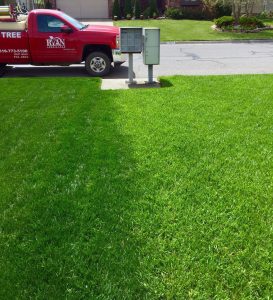
Variations exist even within general seed types like tall fescue. Here is a side-by-side comparison of a lawn seeded with turf-type tall fescue next to a lawn seeded with K31 fescue. Quality of seed is the most important consideration when selecting a type of seed.
The type of grasses you should seed in your lawn usually depends on your location, type of soil, access to irrigation and the amount of sunlight it will get. Lawn care service companies should visit your lawn and assess the best type of grass seed or recommend a combination of types of seed for your lawn. At Ryan Lawn & Tree, we utilize NTEP (National Turfgrass Evaluation Program) results to hand-select the best varieties for each of our Midwest locations that will give us the desired results we want.
For example, if you are seeking the ultimate lush green, envy of the neighborhood lawn, we recommend our Signature Fescue/Bluegrass, a cool-season grass blend. This blend provides the best of both worlds when it comes to color, texture and heat tolerance.
On the other hand, if you are on a large rural property and want the look of fescue but don’t have resources to irrigate it, we may recommend K31 tall fescue. The K31 tall fescue is a much hardier grass and more tolerant to drought stress. This does come at the cost of color and texture with a much courser leaf blade and lighter green color. If you would rather have a lower-maintenance lawn and sunlight is in abundance, we may recommend going with a warm season lawn grass such as Bermuda or buffalo.
While many variables go into selecting the appropriate type of lawn grasses for an area, the biggest variable is what the customer wants (or doesn’t want) and how much they are willing to invest to have the desired result. It’s also important to note that each of the above-mentioned grasses can provide an amazing lawn surface when managed appropriately.
Once the type of grass has been selected most consumers will opt for establishing from seed due to cost or scope of work for installing sod. When choosing to establish by seed the most important step is using clean seed. At Ryan Lawn & Tree, we purchase only the highest level of certified seed to ensure it is quality, viable seed and, most importantly, weed-free! Certified seed will always have a blue or sometimes gold tag on it. When you purchase from a big box store, the certification is generally not there and you will likely end up with a blend of five or more different types of grasses along with the potential of weed seeds.
In addition to looking for clean seed, we always recommend avoiding any seed that contains annual ryegrass. Annual ryegrass is mainly used for short-term erosion control and will become noticeably different and unsightly in the spring and then die in the early summer. If you are a DIY’er and want the look of a Ryan Signature Lawn, we are always happy to sell you our hand-selected seed. There is nothing more frustrating than investing time and money in establishing a new lawn only to have it contaminated with undesirable weeds and grass that sometimes can not be controlled.
In some cases, sodding is a better option, for example when an instant lawn is desired such as new construction or generally when establishing warm-season grasses. Most of the time, your local sod farms will have varieties of sod available that will thrive in your region.
Need a Lawn Care Expert? Contact Ryan Lawn & Tree!
If the nuances of different types of grasses have you confused, no worries. Your seasoned lawn care Pro is only a call away at Ryan Lawn & Tree. Our goal is always to make your lawn the most beautiful in your neighborhood and a place you and your family can enjoy all year round. Call your local RYAN Pro and get a free estimate on fertilizing, seeding, aeration and more. We look forward to serving you soon!

